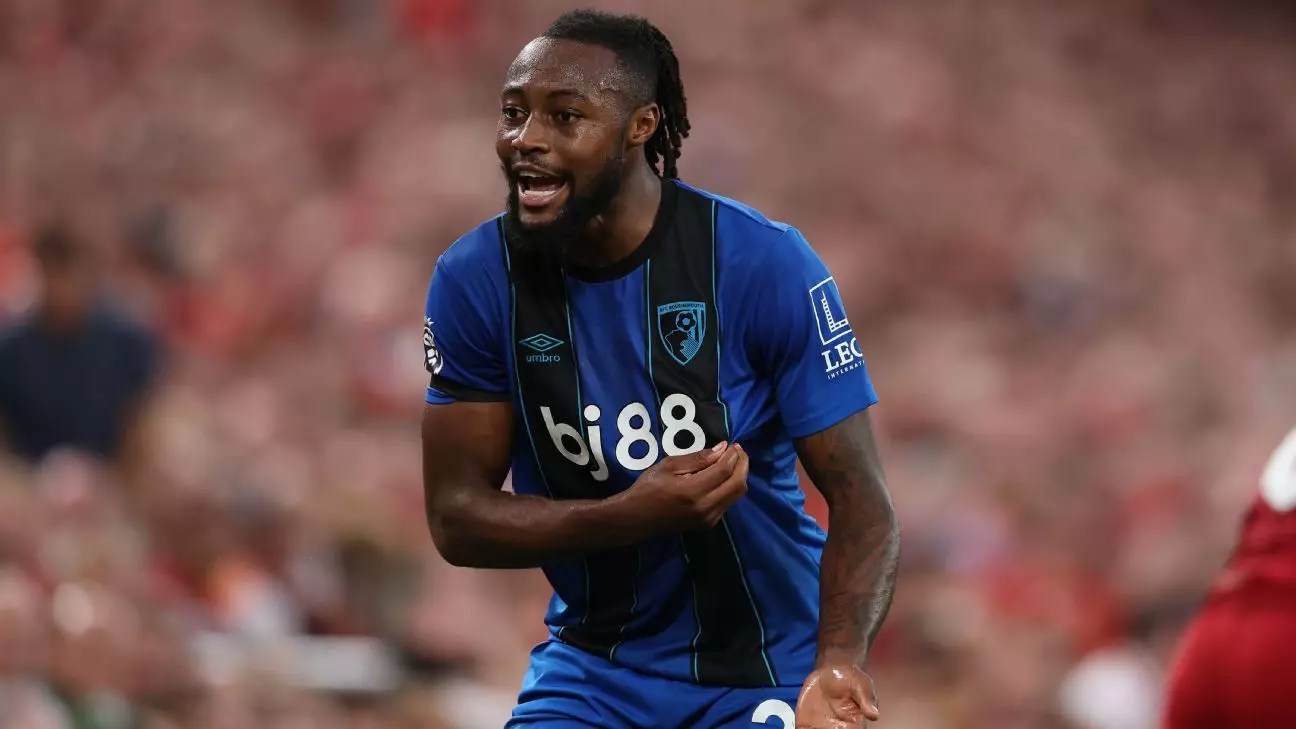The recent events at Anfield once again exposed the ugly reality of racism infiltrating the beautiful game. Despite decades of awareness campaigns and inclusive initiatives, racial abuse persists within football grounds — a reflection of broader societal issues. The incident involving Antoine Semenyo’s targeted abuse during Bournemouth’s match against Liverpool brought this uncomfortable truth into sharp focus, reminding us that progress remains fragile and incomplete. Football, often regarded as a universal language promoting unity, still struggles to eradicate the prejudiced behavior of a minority who tarnish its reputation. This recurrence challenges fans, players, and governing bodies alike to intensify their efforts in fostering genuine change.
The problem isn’t limited to isolated incidents but is symptomatic of a deeply ingrained societal failure to combat discrimination. While clubs and leagues preach inclusivity and diversity, their symbolic gestures and campaigns sometimes fall short of creating tangible impact on the ground. The fact that racial slurs were hurled at Semenyo during such a high-profile match signifies a disturbing gap between ideals and reality. It exposes a stubborn reluctance or inability among some individuals to adhere to the core values of respect and equality. Addressing this issue demands more than superficial sentiments; it requires a rigorous, collective push towards cultural transformation in and around football environments.
The Power of Collective Response and Support
In the face of adversity, the resilience demonstrated by Semenyo and his teammates provides a powerful testament to football’s potential to unite. The responses from players, fans, and officials reveal a deep-seated rejection of intolerance. Semenyo’s heartfelt acknowledgment of the support he received from the football community underscores a meaningful lesson: solidarity in adversity can be a formidable force in confronting discrimination.
Further, Virgil van Dijk’s outspoken condemnation of the abuse and his commitment to educate future generations highlight a pragmatic understanding: combating racism won’t be achieved solely through punitive measures, but through ongoing education and cultural change. Van Dijk’s emphasis on the need to ‘deal with it personally’ and to focus on long-term mindset shifts points to a broader philosophy that includes personal accountability, educational outreach, and sustained advocacy. The collective backing Semenyo received showcases football’s capacity to rally around victims and to channel emotional strength into positive action.
This unity is the most potent weapon against the persistence of racism. When players, clubs, and fans stand together, they send a clear message: discriminatory behavior has no place here. Their solidarity not only provides comfort to victims but also serves as a moral compass, guiding future actions. It demonstrates that genuine support isn’t just spoken in statements but embodied in collective education and unwavering stand against hate.
Rethinking Strategies to Combat Discrimination
The current strategies—such as anti-racism campaigns, taking the knee, and initiatives like “Kick Racism out of Football”—are vital, yet evidently insufficient. Van Dijk’s critique suggests these efforts are often symbolic rather than transformative. This raises an important question: how can football evolve from performative gestures into effective catalysts for change?
We must embrace innovative methods that go beyond surface-level activism. Education, starting from grassroots levels, is paramount. Schools, clubs, and local communities should implement comprehensive programs that teach respect, empathy, and cultural awareness from an early age. Football academies and youth setups can become fertile grounds for nurturing inclusive attitudes, where players learn that their influence extends beyond the pitch.
Moreover, clubs and leagues need to reinforce strict consequences for racially abusive behavior. Fan behavior must be monitored with technological solutions and proactive security measures that deter misconduct. Simultaneously, supporting victims with psychological assistance and public acknowledgment plays a crucial role in healing the wounds inflicted by such incidents. Holding perpetrators accountable shouldn’t be just a matter of punishment but a lesson that intolerance is unacceptable and will be met with firm resistance.
The Moral Imperative for a United Front
Looking at the wider implications, this incident serves as a moral wake-up call for the sport and society at large. Football isn’t merely a game; it’s a mirror reflecting societal attitudes. When racist abuse occurs in stadiums filled with passionate fans and revered players, the message sent out transcends sport—perpetuating harmful stereotypes that influence societal norms.
Players like Semenyo demonstrate that resilience and grace under pressure can redefine the narrative. His decision to acknowledge the support from his teammates and fans, and to focus on the positive moments amid adversity, exemplifies the strength of character needed to combat hate. Football must foster an environment where victims feel safe, supported, and empowered to speak out—transforming moments of darkness into opportunities for enlightenment and growth.
The challenge isn’t just about punishing offenders but about cultivating a culture where respect is the fabric of every interaction. The sport holds the power to instill these values in millions, shaping attitudes beyond stadium boundaries. Leaders within football must recognize their duty to champion genuine inclusivity—embracing change that resonates both on and off the pitch.
In essence, confronting racism in football is a test of moral integrity, and the path forward hinges on unwavering solidarity, proactive education, and a relentless refusal to accept any form of hatred. Only then can the sport truly embody the ideals of unity, respect, and human dignity it has always strived to uphold.


Leave a Reply